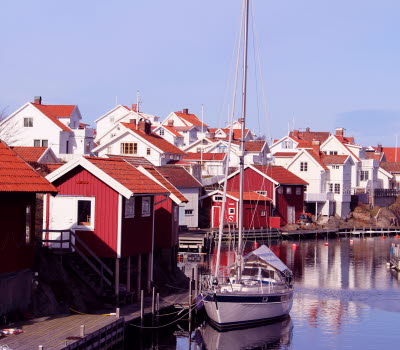Östersidan
Östersidan Skaftö
Östersidan with its narrow alleys has a history way back to the shipping era with herring salteries, guano and the canning industry which offered many jobs to people living on Skaftö. Today Klubban Biological Station is run by Uppsala University and is open the whole year. The passenger ferry Carl Wilhelmson connects Östersidan - Fiskebäckskil - Lysekil all year round. With this ferry you can make the crossing and bring your bike to make a tour of the island Skaftö via Fiskebäckskil and Grundsund.
The first settlements in the 16th century
Östersidan with Klubban on the northern part of Skaftö is now one single streched out village, but in earlier times it was two separate communities with separate roads. People started settling down here in the 16th century.
Flourishing shipping community in the 19th century
In the beginning poor families settled down along beaches of the bay Kilen to catch the herring that came into the fjord. By the middle of the 19th century when every man was allowed to engage in foreign trade with sailing boats, Östersidan was at its peak as a shipping community with both schooners, brigs and barques. The larger houses were built by ship masters and the population increased.
Herring salteries, guano- and canning factories offered many jobs
Large guano factories, herring salteries and canning factories were built and gave many jobs to the people who lived on Skaftö. To the far north of Klubban you can still today see the remains of the herring bins from Bovik factory, which made guano.
Klubban Biological Station and Rödbergsvik
Next to the old guano factory is Rödbergsvik beach area and Klubban Biological Station today. This research and training station is owned and run by Uppsala University all year round. The southern part of Östersidan is characterized by narrow alleys typical for the end of the 19th century.
The passenger ferry Carl Wilhelmson makes the crossing from Östersidan via Fiskebäckskil over to Lysekil.








